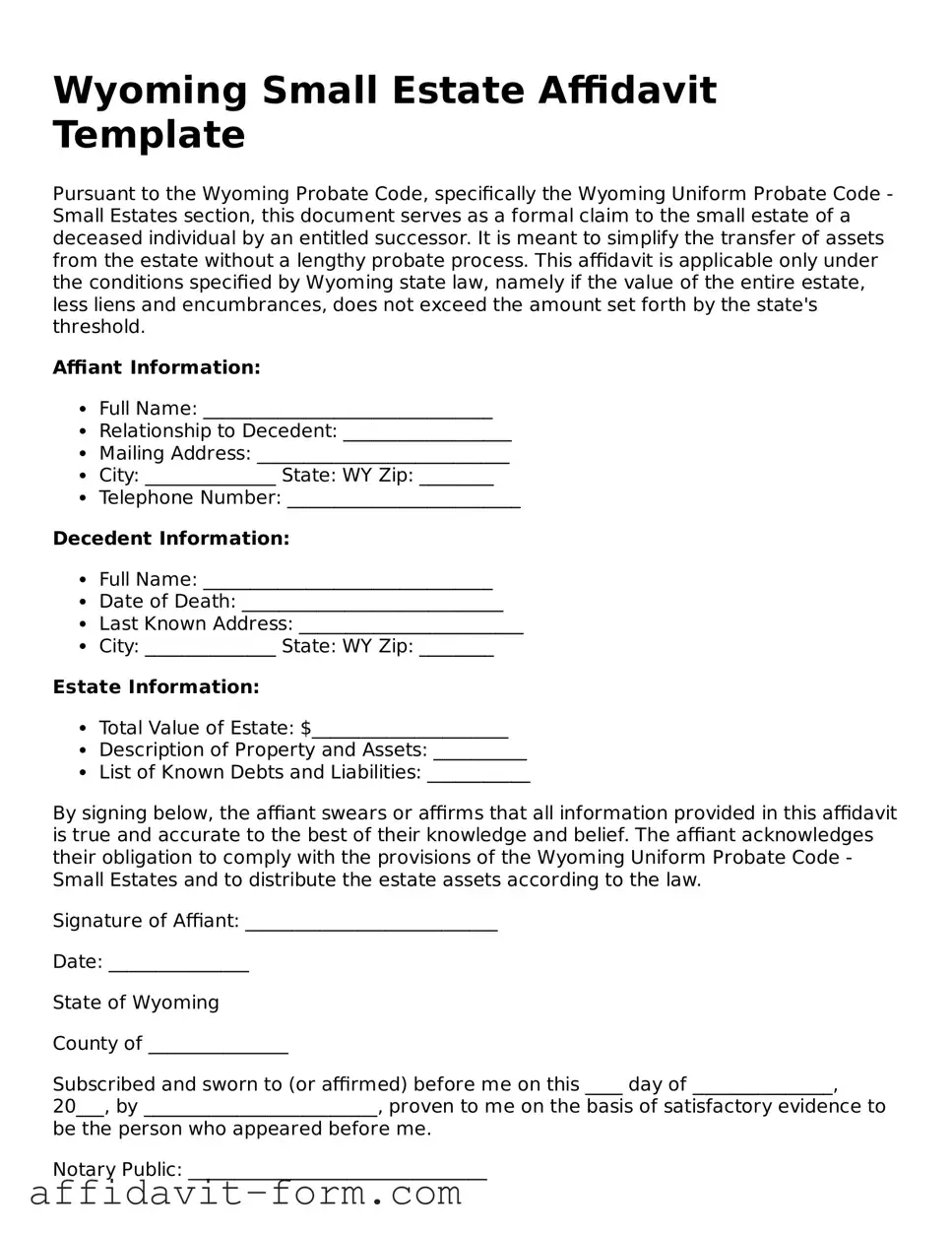Wyoming Small Estate Affidavit Template
Pursuant to the Wyoming Probate Code, specifically the Wyoming Uniform Probate Code - Small Estates section, this document serves as a formal claim to the small estate of a deceased individual by an entitled successor. It is meant to simplify the transfer of assets from the estate without a lengthy probate process. This affidavit is applicable only under the conditions specified by Wyoming state law, namely if the value of the entire estate, less liens and encumbrances, does not exceed the amount set forth by the state's threshold.
Affiant Information:
- Full Name: _______________________________
- Relationship to Decedent: __________________
- Mailing Address: ___________________________
- City: ______________ State: WY Zip: ________
- Telephone Number: _________________________
Decedent Information:
- Full Name: _______________________________
- Date of Death: ____________________________
- Last Known Address: ________________________
- City: ______________ State: WY Zip: ________
Estate Information:
- Total Value of Estate: $_____________________
- Description of Property and Assets: __________
- List of Known Debts and Liabilities: ___________
By signing below, the affiant swears or affirms that all information provided in this affidavit is true and accurate to the best of their knowledge and belief. The affiant acknowledges their obligation to comply with the provisions of the Wyoming Uniform Probate Code - Small Estates and to distribute the estate assets according to the law.
Signature of Affiant: ___________________________
Date: _______________
State of Wyoming
County of _______________
Subscribed and sworn to (or affirmed) before me on this ____ day of _______________, 20___, by _________________________, proven to me on the basis of satisfactory evidence to be the person who appeared before me.
Notary Public: ________________________________
My Commission Expires: ________________________
